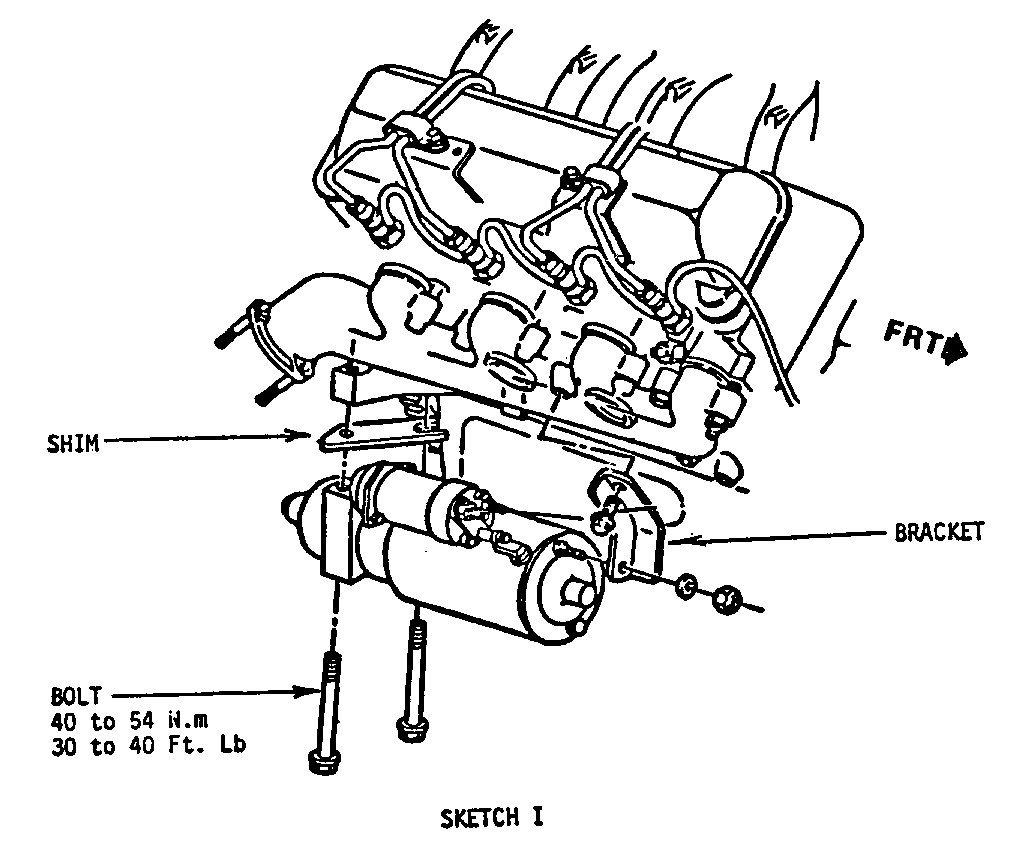STARTER NOISE/NO START DIESEL CLEARANCE INFORMATION

This cancels and supercedes bulletin 83-T-32 dated July, 1983, to correct the part number of the 1.0mm shim from 14028932 to 14028933. Previously released copies should be destroyed.
Starter noise or a no-start condition may result from inadequate flywheel ring gear to starter pinion clearance, due to insufficient shimming.
To correct these conditions, proper starter shimming procedures should be followed:
1. Disconnect both battery ground wires.
2. Remove flywheel inspection cover.
3. Inspect for damage to flywheel teeth. Replace flywheel if teeth are damaged. (The 6.2L engine will normally stop in one of four positions approximately 90 DEG apart where, due to repeated starter pinion gear engagements, the teeth will be more worn than others. Do not fail to check these four (4) locations for excessive damage.)
4. Loosen both starter bolts. Remove the outboard bolt. Remove the shim(s).
5. Check the shim(s) for thickness. Regardless of the total shim thickness present, add more shim(s) to bring the total thickness to 3.0mm. If the shim thickness is 3.0mm, add a 1.0mm shim. Do not exceed 4.0mm. 1.0mm shim is P/N 14028933.
6. Position shim(s) and insert outboard bolt.
7. Torque bolts to 40 to 54 N.m (30 to 40 ft. lbs.). Torque is very important. Do not overtorque. Overtorque will cause the starter housing to crush. Undertorque can cause the bolts to loosen.
8. If the starter and/or the starter pinion gear has to be repaired or replaced, remove the bracket bolt from the front of the starter. Disconnect wires. Remove both bolts and shims. Be sure to replace the front bracket bolt on re-assembly. Replace shims as in Step 5.
9. Reinstall inspection plate.
10. Connect battery wires.

General Motors bulletins are intended for use by professional technicians, not a "do-it-yourselfer". They are written to inform those technicians of conditions that may occur on some vehicles, or to provide information that could assist in the proper service of a vehicle. Properly trained technicians have the equipment, tools, safety instructions and know-how to do a job properly and safely. If a condition is described, do not assume that the bulletin applies to your vehicle, or that your vehicle will have that condition. See a General Motors dealer servicing your brand of General Motors vehicle for information on whether your vehicle may benefit from the information.
